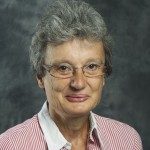Link to Pubmed [PMID] – 28112723
Nat Microbiol. 2017 Jan 23;2:16263. doi: 10.1038/nmicrobiol.2016.263
The environmental bacterium Burkholderia pseudomallei causes an estimated 165,000 cases of human melioidosis per year worldwide and is also classified as a biothreat agent. We used whole genome sequences of 469 B. pseudomallei isolates from 30 countries collected over 79 years to explore its geographic transmission. Our data point to Australia as an early reservoir, with transmission to Southeast Asia followed by onward transmission to South Asia and East Asia. Repeated reintroductions were observed within the Malay Peninsula and between countries bordered by the Mekong River. Our data support an African origin of the Central and South American isolates with introduction of B. pseudomallei into the Americas between 1650 and 1850, providing a temporal link with the slave trade. We also identified geographically distinct genes/variants in Australasian or Southeast Asian isolates alone, with virulence-associated genes being among those over-represented. This provides a potential explanation for clinical manifestations of melioidosis that are geographically restricted.


